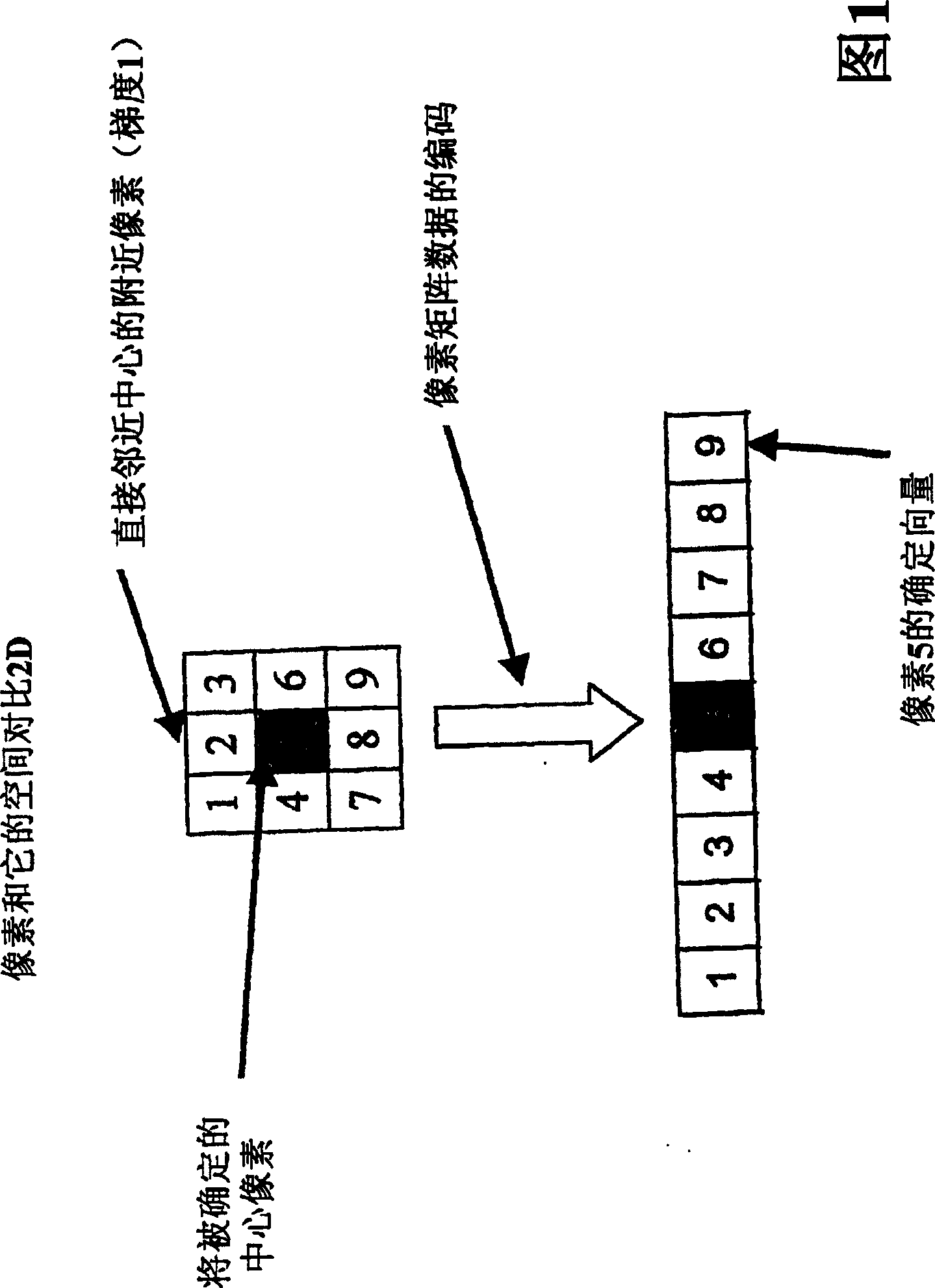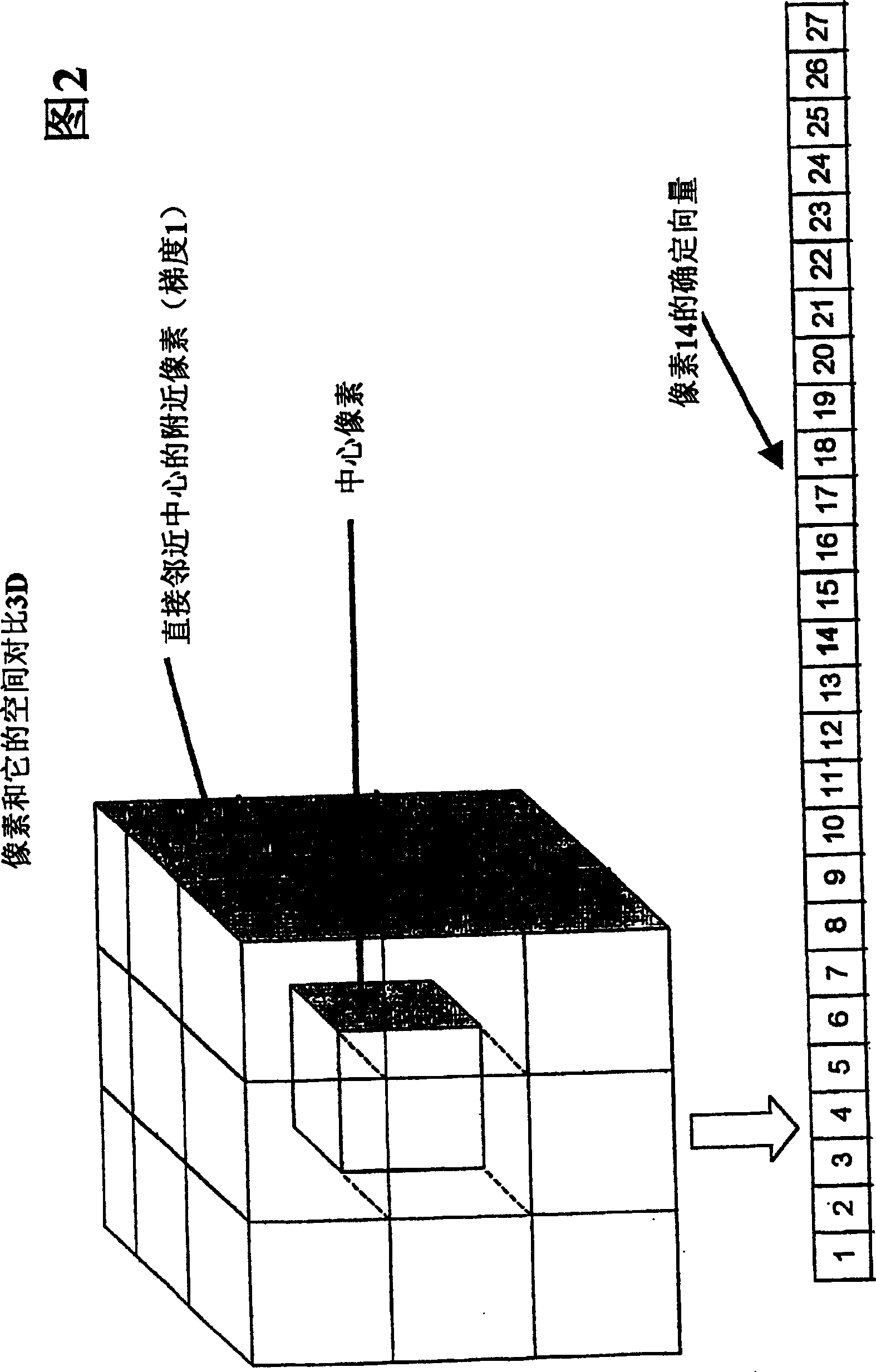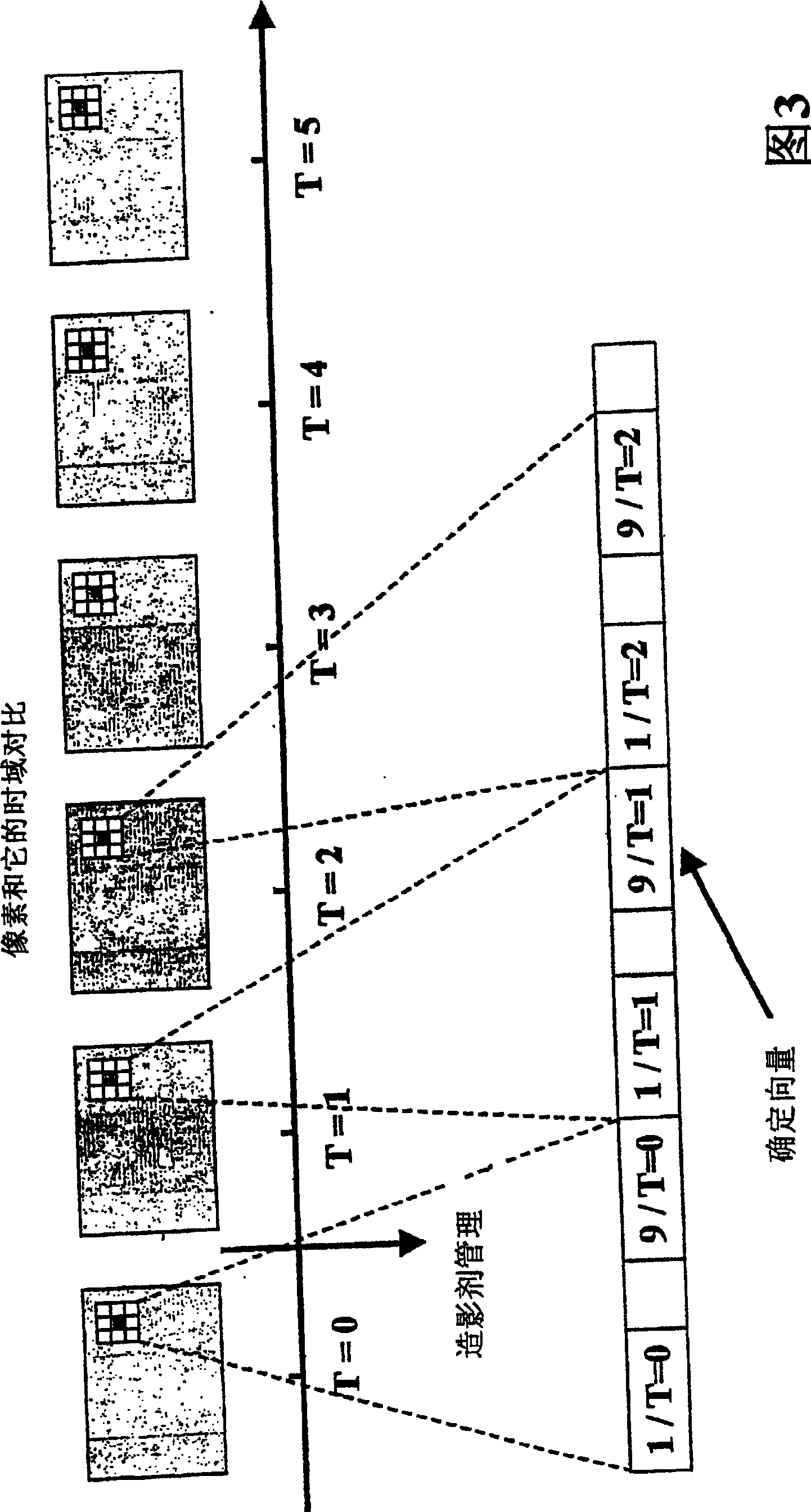A method for encoding image pixels and a method for processing images
A pixel, image technology applied in the field of image recognition in which objects are reproduced to achieve the effect of increasing knowledge and expertise, avoiding errors in image recognition and analysis, and improving reliability and accuracy
- Summary
- Abstract
- Description
- Claims
- Application Information
AI Technical Summary
Problems solved by technology
Method used
Image
Examples
example 1
[0147] Example 1 (Figure 5)
[0148] object Chest imaging method nuclear magnetic resonance Purpose identify tissue type organization type
1. Benign tumor
2. Malignant tumor pixel encoding
3×3 pixel matrix
Encode the pixel as the center pixel Image Resolution 256×256 pixels
[0149] In Example 1, a training database for an image processing algorithm is generated that recognizes two types of tissue, benign and malignant tissue in the thoracic region.
[0150] A predetermined number of MRI images of chest regions of patients diagnosed with malignant breast tumors and patients with benign breast tumors were pixel-coded according to the method described above. The determination vector of pixels has as components all the pixels of the surrounding 3x3 pixel matrix, where the pixel being coded is the center pixel (Fig. 1).
[0151] Assign the tissue type reproduced by the pixel in the image to each pixel's identified vecto...
example 2
[0170] Example 2 is similar to Example 1, but a tissue type, normal tissue, is added to the recognition database. Thus, when generating the training database, the encoded vectors of image pixels are uniquely associated with one of the tissue types represented therein, benign, malignant, or normal.
[0171] This additional type allows a large number of pixels and corresponding definite vectors to have definite meaning. In the previous example, these pixel determination vectors and the corresponding pixels have no meaning in the processing algorithm, whereas in the second example the processing algorithm can assign an additional unambiguous class or tissue type.
[0172] The additional possibility reduces error because the algorithm can choose from three conditions or states assigned to a certain vector.
[0173] The execution of this example can be described and shown with reference to the previous Example 1.
[0174] In this example, only the following neural network was sel...
example 3
[0179] Example 3 is similar to the above example, but includes 5 tissue types, namely: benign tumor tissue, malignant tumor tissue, normal tissue, muscle tissue and image background.
[0180] The training database is generated according to the method described above with reference to the previous example, and includes pixel determination vectors, wherein each pixel determination vector is uniquely assigned one of the above five types, that is, the type represented by a single pixel.
[0181] Figure 7 illustrates the results of tissue type recognition for each image pixel, the algorithm used is as follows:
[0182] processing algorithm Metanet Af MetaBayes MetanetBp MetanetCm FF-Bm FF-Sn FF-BP FF-Cm LDA
[0183] All of these processing algorithms except LDA are neural networks. LDA is a discriminative algorithm.
[0184] The obtained results showed a very high reliability of tissue type identification. It is further ...
PUM
 Login to View More
Login to View More Abstract
Description
Claims
Application Information
 Login to View More
Login to View More - R&D
- Intellectual Property
- Life Sciences
- Materials
- Tech Scout
- Unparalleled Data Quality
- Higher Quality Content
- 60% Fewer Hallucinations
Browse by: Latest US Patents, China's latest patents, Technical Efficacy Thesaurus, Application Domain, Technology Topic, Popular Technical Reports.
© 2025 PatSnap. All rights reserved.Legal|Privacy policy|Modern Slavery Act Transparency Statement|Sitemap|About US| Contact US: help@patsnap.com



